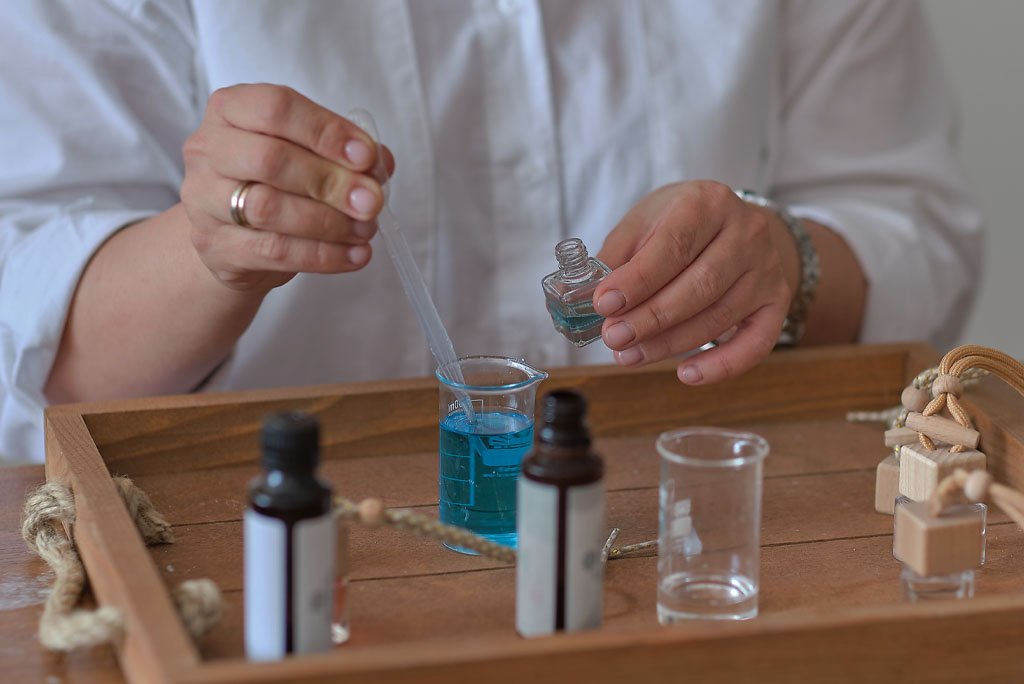👀 (31569)
1. Introduction
Perfume composition is an art that has been practiced for centuries. It is the art of creating a scent that is pleasing to the nose and evokes certain emotions in the wearer.
Recently, there has been a resurgence of interest in perfume composition, particularly among younger people. This is likely due to the increased availability of information and resources on the subject.
If you are interested in learning about perfume composition, this guide is for you. It will introduce you to the basics of perfume composition and provide you with resources for further study.

2. The Three Key Elements of Perfume
When creating a perfume, there are three essential elements that must be taken into consideration: the top notes, middle notes, and base notes.
– Top notes are the first impression of a scent, the ones that you will smell immediately upon first applying the perfume. They are usually light and subtle, and tend to evaporate faster than the other notes. Examples of top notes include citrus, floral, fruity, and herbal notes.
– Middle notes are the main body of the fragrance. They will usually take around 15 minutes to develop on the skin and will remain for at least several hours. Examples of middle notes include resins, woody notes, spices, and herbs.
– The base notes form the foundation of the perfume and are usually the lasting scent that will linger after the other notes have dissipated. These are typically long-lasting notes, like musk, vanilla, and patchouli.
The combination of these three notes will determine the overall scent of the perfume. Most high-quality perfumes will feature a combination of all three categories of notes.

3. The Art of Perfume Composition
Creating the perfect perfume is an art form. The composition of a perfume requires a delicate balance of the three key elements, top notes, middle notes, and base notes. It should also take into consideration the emotional reaction of the wearer and the wearer’s physical environment.
When composing a perfume, a perfumer will typically start with the base notes. These provide the foundation for the composition, so it is essential that they be well balanced and blend well. Next, the middle notes are added. These notes are the fragrance’s core, so they should complement and enhance the base notes. Finally, the top notes will be added to give the perfume its finishing touch. The top notes will take on the role of the “head notes”, and will be the first scent that the wearer will notice upon applying the perfume.
A perfumer may also experiment with various blending techniques, such as layering, wet–dry, fading, and molecular diffusion, to achieve the desired results. It is important to remember that the key to the perfect perfume is balance, so it is essential to make sure that none of the three key elements stand out too strongly. Once the perfumer has achieved the desired scent, the process of ageing the perfume begins. Ageing is a crucial part of the perfume-making process, and can take several months or even years, depending on the scent. From start to finish, the art of perfume composition can be a
4. The Ten Perfume Families
The ten perfume families are used to describe the scent of a perfume. When a perfumer is creating a fragrance, they will typically pick one of the ten families as the framework for the composition. The families are divided into two main categories: traditional and modern.
The traditional families include Aromatic, Citrus, Floral, Fougere, Oriental, and Woody. The modern families are Chypre, Gourmand, Oceanic, and Fruity.
Aromatic fragrances have a blend of herbal and spice notes and include such scents as rosemary, lavender, and thyme. Citrus scents are uplifting and refreshing and include lemon, grapefruit, lime, and bergamot. Floral fragrances are typically found in women’s perfumes and often combine rose, jasmine, gardenia, and lilac. Fougere scents are typically used in men’s fragrances and typically contain bergamot, lavender, oakmoss, and geranium.
Oriental fragrances are warmer and spicier than most other scents and combine jasmine, patchouli, sandalwood, and musk. Woody scents have a woody, balsamic aroma and typically include cedarwood, sandalwood, and vetiver.
The modern categories include Chypre, Gourmand, Oceanic,
5. Building Your Own Scent
One of the most rewarding aspects of learning the art of perfume composition is the ability to create your own unique scent. It takes a combination of scent families and other factors to create something truly special.
Building your own scent requires a creative and imaginative approach. Understanding the nuances of each scent family, and the different elements that make up each family, will help you to create something truly unique.
When creating your own scent, it is important to understand the balance between the top, middle, and base notes. Most scents have a top note, a middle note, and a base note. The top note gives the initial impression of the scent. The middle note adds depth and complexity to the scent, while the base note helps to anchor the scent. Additionally, to bring out each of the notes, it is important to use different concentrations of each note.
Once you have chosen the notes for your scent, you will need to begin the blending process. This is often the most fun and creative part of the perfume composition process. Start by combining small amounts of the three notes until you get the desired effect. Experiment with mixing different amounts but stick with the original notes and composition ratios.
Finally, you need to let your scent settle, or ‘age’, in order to release and enhance each of the notes. Perform a ‘sniff-test’ every few hours to check the scent and make any adjustments. Once you have created
6. The Rules of Perfume Composition
The art of perfume composition is a complex and multifaceted art form. A great smelling scent doesn’t happen overnight, as it takes skill and patience to create a great perfume. Additionally, there are several rules you must consider when creating your own scent.
Firstly, it is important to consider the pyramid of notes when composing a scent. As previously mentioned, most perfumes have a top note, a middle note, and a base note. The top note is typically a light scent and is designed to give the initial impression of the fragrance. This is usually the first thing you’ll smell when you first spray a scent. The middle note is a bit more intense and creates depth in the scent. This is usually what you will smell after the initial top notes have faded away. Finally, the base note is the opposing force of the scent. This note is responsible for anchoring the other two notes and providing a longer-lasting scent.
Another important principle to consider when composing a scent is balance. To achieve a pleasing, well-balanced scent, all the notes should be equally represented and in the correct concentrations. If the balance is off, the scent can end up being unpleasantly overwhelming.
Finally, it is important to let your scent age or settle before you evaluate it. Biologists say that it takes two weeks for a scent to settle into its true form. During this settling period, the scent may change slightly, so let it sit
7. The Future of Perfume
The art of perfumery is not static; it is continuously evolving. As technology advances, so do the strategies for creating memorable scents. In the future, scientists hope to use artificial intelligence (AI) to help with the fragrance creation process. By combining AI with data collected from surveys, manufacturers will be able to create highly personalized scents.
Near Future technologies such as 3D printing may also be employed to create custom fragrances. Manufacturers will be able to create scent blends and combine different ingredients to create the exact scent desired by customers.
Augmented reality may also be used to create one-of-a-kind fragrances. Allowing customers to utilize this technology to mix and create their own unique customizable scents without ever having to leave the comfort of their homes. This could revolutionize the fragrance industry and give it an even bigger customer base.
The future of perfumery looks exciting and promising. With the application of the new high-tech tools and the ever-evolving trends, the art of perfume composition is sure to reach new levels of creativity and innovation.






One comment
Very interesting topic, appreciate it for putting up.Raise blog range